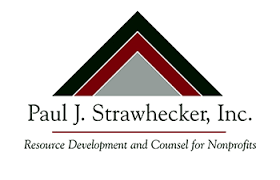Ryan Strawhecker, incoming President, Paul J. Strawhecker, Inc.
Ryan is the incoming President for Paul J. Strawhecker, Inc., a non-profit consulting firm in its 26th year. Prior to re-joining Paul J. Strawhecker, Inc. in 2017, Ryan raised funds for the United Way of the Midlands (Omaha, NE), and Omaha Home for Boys. He has worked in capital campaigns, major and planned giving (including charitable gift annuities) grant writing and donor research. In 2016, he received the CFRE designation. Ryan loves working in small groups and has been in fundraising since his career started in 2002.
For several years now, when Giving USA releases its annual report regarding charitable giving trends, one of the key findings has been that the amount of overall funds given to charities has grown, but the number of contributors has decreased.
This phenomenon demonstrates a long-term concern regarding the loss of donors fundraising professionals have seen across the country. Annually, the decisions made by major donors are of more and more consequence as nonprofits have more trouble finding donors.
So, who will be the future donors to nonprofits? This question needs our attention.
Through the years I’ve seen many development directors spend time and effort on acquiring new donors. And rightly so. New donors pump life and momentum into a fundraising program. New donors are found through special events, acquisition mailings, and online giving or peer-to-peer campaigns.
But what about mid-level donors?
Somewhere lost between major donors and new donors have been our mid-level donors, usually classified by the amount they give. Mid-level donors, by virtue of their name, give less than major donors but more than what organizations consider their small annual giving donors.
But aren’t mid-level donors who we take for granted the most? Shouldn’t we spend more time getting to know who they are? Grab a coffee with a development director and you’ll likely have a conversation about ways to better connect with major donors or cultivate new donors through online fundraising before ever discussing an organization’s mid-level donors.
What, or rather who, are mid-level donors?
For our purposes today, depending on the organization, a mid-level donor could contribute somewhere in the $1,000-$10,000 range annually. You might also consider them as someone who has given to your organization in the last 24 months directly below your major gift level.
Through working in donor research over the years, I feel confident in saying there are many donors contributing to organizations at a mid-level who are giving to other organizations at higher levels and have enough wealth capacity to make bigger pledges or annual gifts than they are to your organization. The trouble has been finding these donors in your database, understanding a bit about them, and putting in as much effort to cultivate them as you might on your annual strategy.
Consider that mid-level donors are likely to be of the Generation X age (born in the mid-1960s to the early 1980s.) According to 1 Pew Research, Generation X donors have the following characteristics: 79% are religiously affiliated, 64% are patriotic. As a group, they want multiple avenues to make donations, 50% want to see the impact of their gifts, and 50% don’t mind multiple solicitations in a year.
According to a 2 “The Missing Middle” study from 2014 and 2018, around 20 different organizations studied their mid-level donor engagement and found only 12% of their contributions for the year came from mid-level donor tiers. Is it possible that mid-level donors, or Generation X, aren’t very philanthropic? I would argue differently. According to a 3 “Next After” study, 2014-2018, 37 charities participated in research and noted that only 8% of their annual donors received phone calls and actually 49% of their donors didn’t receive any communication at all. I would argue development offices have not traditionally concentrated on mid-level donors or engaged Generation X for donations all that well.
Recall the trend of more donations and fewer donors? What does that have to do with Mid-level donors? One possible reason for the decrease of individual donors giving in the mid-ranges is the giving vehicles they are using are evolving. As Generation X and Boomers continue to age, they are more likely to be using community foundations, donor advised funds, or family foundations which means they are less likely to be writing a check from their individual banking accounts. Perhaps these donors are more under the radar, but actually they are of the age to be business owners, community leaders and could be in their highest earning years of their life.
Final Thoughts
Keep in mind, donor research has become more readily available, and it is now easier to know basic information about almost all our donors. So, reflecting on the above, to stop the national trend of losing the number of annual donors making gifts to your organization, one area to focus on more attentively is keeping your mid-level donors and cultivating them in a way that matters to them.
Are you using donor research to understand the general age of your donors and who your mid-level donors might be? Are you communicating with them in a way that makes them want to support you year after year? Register for our upcoming training, Finding the Right Donor, today!
Next time you talk with your fundraising team, consider asking what you are doing to keep Generation X involved? Are you finding ways to show them the impact of their gifts? Are you soliciting them more than once in a year? Spend some time understanding your mid-level donors and I think your annual fund, and your future major gift program will appreciate it!
- https://www.pewresearch.org/topic/generations-age/generations/generation-x/
- https://seachangestrategies.com/scwp/wp-content/uploads/2018/05/the-missing-middle-part-two.pdf
- https://www.nextafter.com/studies/mid-level-donor-crisis/
About Paul J. Strawhecker, Inc.

We value relationships and are proud to connect nonprofits to our partner network and hope this helps increase your nonprofit’s effectiveness and success. We proudly partner with Paul J. Strawhecker, Inc., a consulting firm dedicated to helping nonprofit organizations with strategies, communication and resource development.



